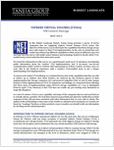The Future of Drones: Sky-High Hopes vs. Regulatory Realities
When Raphael Pirker needed overhead shots for a commercial he was filming at the University of Virginia, instead of spending thousands of dollars to rent a helicopter, he attached a camera to a 5-lb. (2.3 kilograms) model airplane, creating a custom…
Lifetime Customer Value: Measuring Customer Service Performance
There is no one contact center KPI that can totally predict a given customer lifespan. Our latest post outlines KPIs and metrics to help determine and improve Lifetime Customer Value.Request Free!
Lifetime Customer Value: Measuring Customer Service Performance
There is no one contact center KPI that can totally predict a given customer lifespan. Our latest post outlines KPIs and metrics to help determine and improve Lifetime Customer Value.Request Free!
Seven steps to a successful telecoms B2B customer experience programme
Take away a framework to base your strategies around by using this article to devise your goals, with a coordinated approach to building a plan from the ground up to succeed against your competitors.Request Free!
Executive Brief: The 4 Es of Employee Engagement
The connection between engagement and higher performance is well established in nationwide and global surveys. Simply put, engaged employees go the extra mile to get the job done. And yet, Gallup tells us that 70% of U.S. workers are either not engaged…
Viewing Business From All Angles
Taneja Group Report: VVOL Competitive Landscape
Need help deciding which VVOL-enabled array is best suited for your datacenter? Download this Taneja Group Market Landscape Report.Request Free!
Could Your Content be Working Harder – and Smarter?
Equipping IT with the resources that they need to optimize the user experience to match that of consumer applications can help you achieve the business outcomes you want, while making the most of your Enterprise Content Management (ECM) investments.Req…
Gartner Report: IBM Takes Steps to Improve the Usability, Consumability and Flexibility of Its ECM Portfolio
IT leaders are looking for content management software that is more affordable, consumable, and that offers an improved user experience. IBM Content Navigator and the simplified IBM Content Foundation aim to address those issues for IBM’s content manag…












